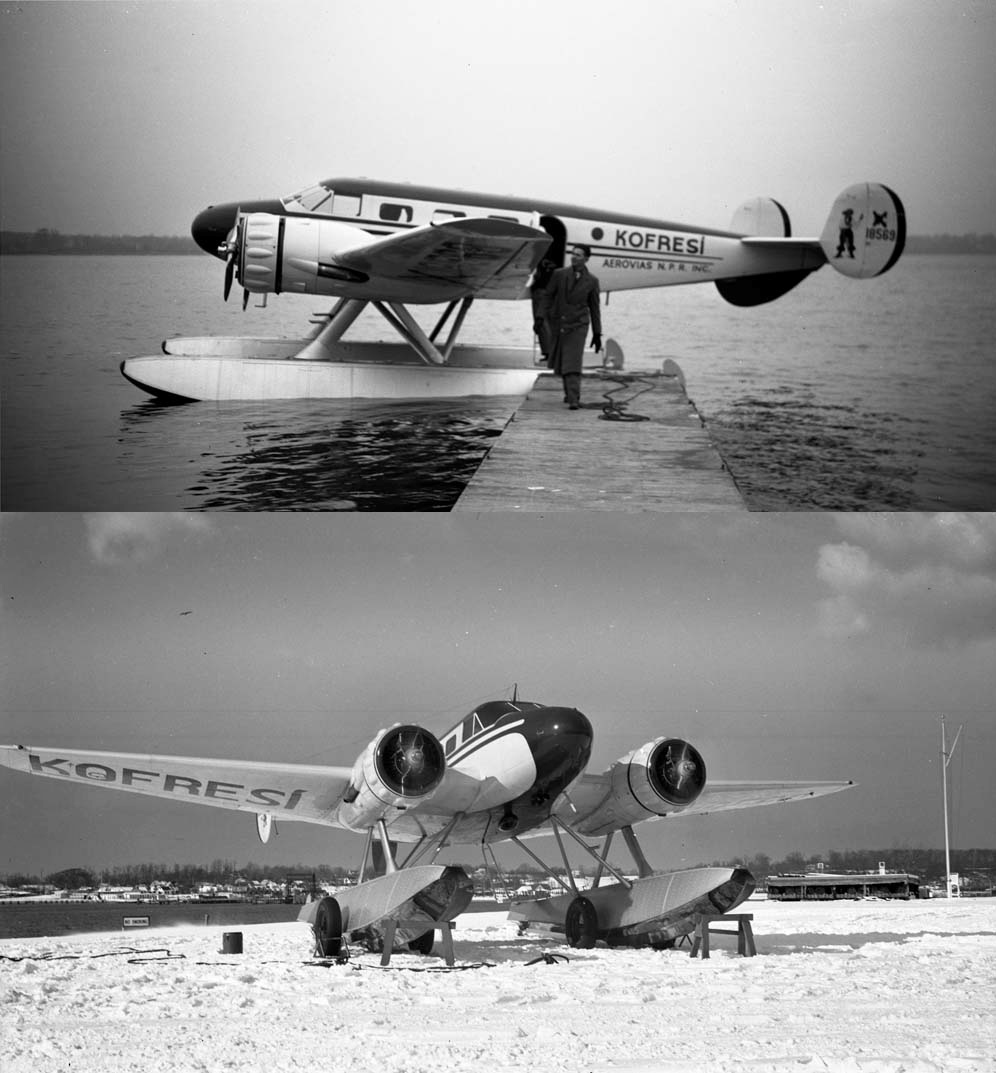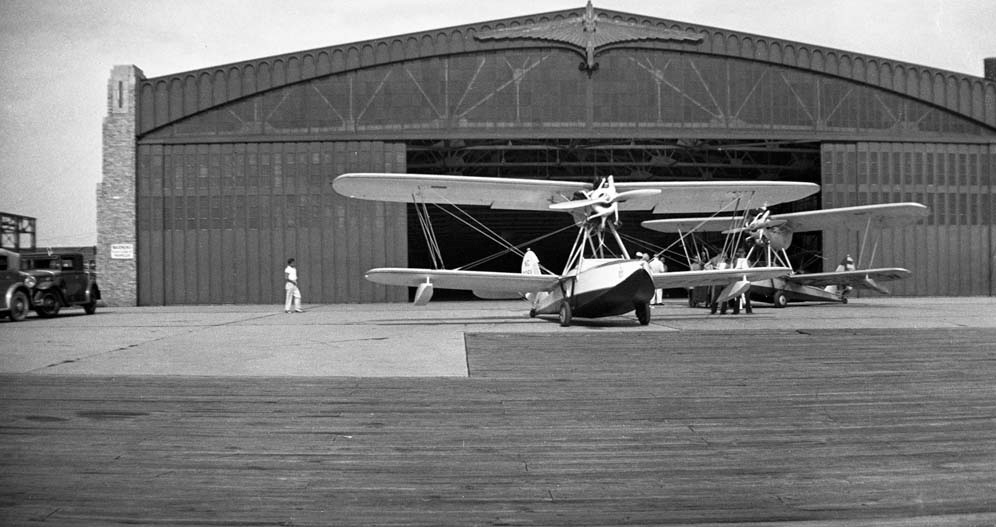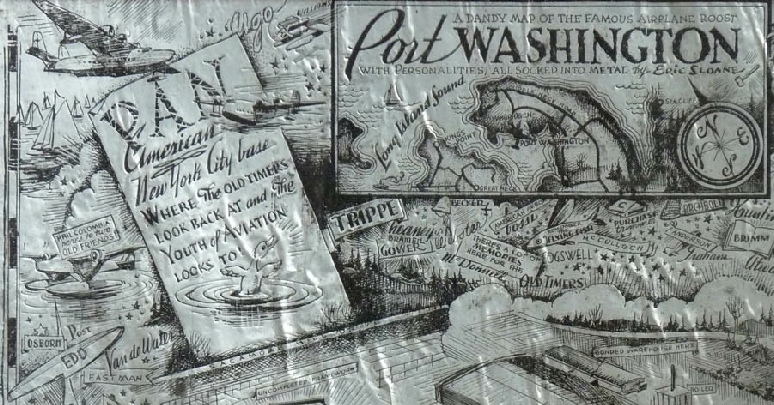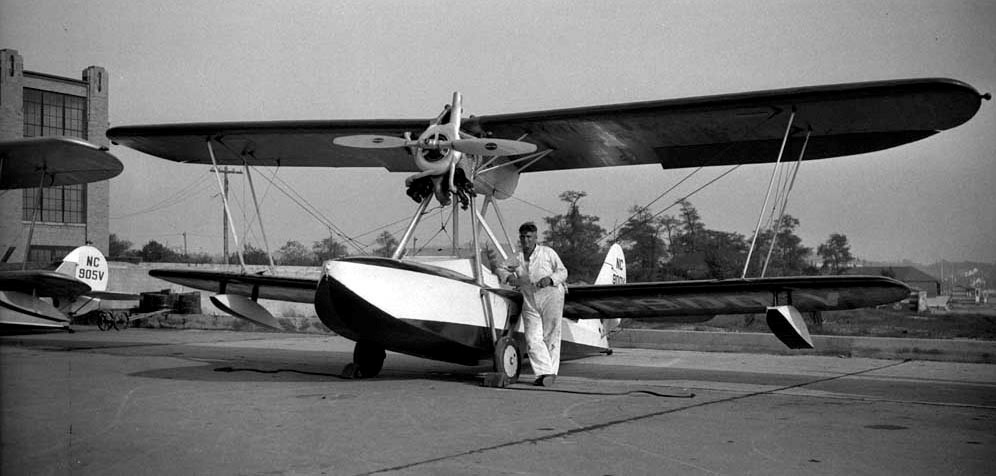


From John Underwood: “The two little amphibians are Savoia-Marchetti S-56s, some fifty of which were built under license at Port Washington by American Aeronautical, which also built several examples of the much larger S-55 made famous by Italo Balbo's 1932 World's Fair cruise. The S-56s were all-wood 3-seaters, powered by 125 hp Kinner B5s. Two are still around and were airworthy at last report, although I've lost track of their whereabouts.One may be in the Cradle of Aviation Museum on Long Island.
This is from the Eric Sloane artwork detailed at: http://theoregonchristensens.com/ESart/
Walter was fortunate to have worked at the Port Washington, New York facility of Pan American. That site was used as the New York destination for various carriers; later it was moved a bit closer to New York City as LaGuardia Airport. But from 1934 to 1940, the years he worked there, Port Washington was a major player in the developing air travel industry. “Where the old timers look back at and the youth of aviation looks to.”
From Wikipedia:
“Puertorriqueña de Aviación, previously known as Aerovías Nacionales de Puerto Rico (alternatively known as ANPRI) was an airline company that operated during the 1930s. It was the first documented attempt by Puerto Ricans to have a flag carrier in the country.
In 1936, brothers Horacio and Narciso Basso acquired a hydroplane to start commercial airline flights around the Caribbean.
The hydroplane that Aerovías Nacionales used was named "Kofresi", after the famous pirate, Roberto Cofresi.”
Famous pirate indeed! The above is Kofresi in the Port Washington snow. Looks fairly modern for 1936. Notice the pirate on the tail in the top picture.
From John Underwood: “The "Kofresi" job is a very early Beech 18 on Edo floats, built in 1937. A friend, Scotty Burmood, tested the first one on floats. The feds required full spin testing and he got into a flat spin. Augured into Jamaica Bay. Neither Scotty nor his mech could swim and they almost drowned. Edo salvaged the wreck and sent it back to the factory for recycling.”
Note the above Eric Sloane artwork with the float labeled “EDO” on the left.

